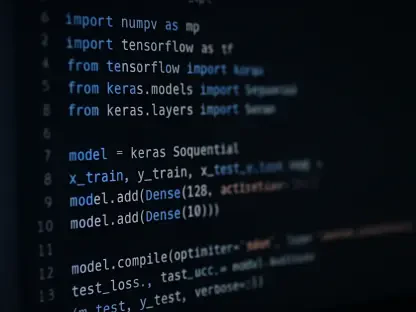Introduction
Imagine a software system that appears modular and well-structured on the surface, yet crumbles under the slightest change due to invisible dependencies lurking beneath, creating a frustrating challenge for developers. This scenario is far too common in software development, where hidden coupling can turn manageable code into a maintenance nightmare. Dynamic connascence, a subtle and often overlooked form of code coupling, emerges only at runtime, making it a critical challenge for developers aiming to build robust systems. The importance of understanding this concept lies in its ability to reveal dependencies that impact scalability and reliability, often leading to unexpected errors if left unaddressed.
The purpose of this FAQ article is to demystify dynamic connascence by addressing key questions surrounding its definition, types, and mitigation strategies. It aims to provide clear guidance for developers seeking to identify and manage these hidden interdependencies effectively. Readers can expect to gain insights into the four main types of dynamic connascence, practical examples of their impact, and actionable approaches to reduce coupling for better code design.
This exploration will cover the fundamental aspects of dynamic connascence, ensuring a comprehensive understanding of its relevance in modern software engineering. By breaking down complex ideas into digestible answers, the content will equip developers with tools to enhance modularity and prevent the pitfalls of tightly coupled systems. Whether new to the concept or looking to refine existing knowledge, this article offers valuable perspectives on improving software quality.
Key Questions on Dynamic Connascence
What Is Dynamic Connascence and Why Does It Matter?
Dynamic connascence refers to a type of code coupling that becomes apparent only during runtime, unlike static connascence, which is visible in the code structure itself. This runtime nature makes it particularly challenging to detect and address, as issues may not surface until the application is executing. Its significance stems from the potential to create strong dependencies between components, complicating debugging and increasing the risk of errors in complex systems.
The importance of recognizing dynamic connascence lies in its impact on software maintainability and scalability. When components are tightly coupled in ways that are not immediately obvious, a change in one part of the system can inadvertently break another, leading to costly fixes and delays. Addressing this form of coupling is essential for creating flexible, modular codebases that can adapt to evolving requirements without cascading failures.
By understanding dynamic connascence, developers can proactively design systems to minimize hidden dependencies. This awareness aligns with core software engineering principles like loose coupling and high cohesion, ultimately leading to more robust applications. Ignoring these runtime couplings often results in technical debt that becomes harder to resolve over time, making early identification a critical skill.
How Does Connascence of Execution Affect Code Behavior?
Connascence of execution, often referred to as temporal coupling, occurs when the correct functioning of a system depends on the specific order in which code executes. This type of dynamic connascence is problematic because incorrect sequencing can lead to errors that are not evident until the application runs. It is a common issue in systems where certain operations must precede others to maintain data integrity or logical flow.
A practical example involves a user management system where attributes must be set before adding a user record to a database. If the order is reversed, the system might fail to store the data correctly, resulting in unexpected behavior. Such dependencies are often buried in complex workflows, making them difficult to spot without thorough analysis or explicit documentation to guide future maintainers.
To mitigate this form of connascence, developers can refactor code to enforce explicit ordering through design patterns or clear comments that highlight critical sequences. Reducing reliance on implicit assumptions about execution order helps lower the level of coupling, making the system more predictable. Tools like automated testing can also assist in uncovering these issues during development, preventing runtime surprises.
What Challenges Arise from Connascence of Timing?
Connascence of timing emerges when the outcome of an application depends on the precise timing of execution, often seen in multi-threaded environments or distributed systems. This type of dynamic connascence is notoriously difficult to diagnose due to its unpredictable nature, influenced by external factors such as thread scheduling or network latency. It poses significant risks in applications where timing variability can lead to race conditions or inconsistent results.
An illustrative case is a race condition in a multi-threaded program where two threads attempt to update the same resource simultaneously. If the timing of these updates is not controlled, the system may produce incorrect outputs or crash entirely. These issues often evade detection during initial testing, surfacing only under specific runtime conditions that are hard to replicate.
Addressing connascence of timing requires careful design to minimize dependencies on execution timing, such as using synchronization mechanisms like locks or semaphores in concurrent programming. Developers should also leverage tools for stress testing to simulate variable conditions and identify potential failures. By prioritizing resilience to timing variations, systems can achieve greater stability, even in unpredictable environments.
How Does Connascence of Value Create Tight Coupling?
Connascence of value happens when multiple components must agree on specific values to function correctly, creating tight coupling if those values change. This form of dynamic connascence often appears in scenarios where hardcoded data is duplicated across modules, leading to fragility when updates are required. It is a prevalent issue in systems lacking centralized data management, amplifying the risk of inconsistency.
Consider a situation where a unit test and a price scanner class both hardcode the price of an item. If the price changes, both components must be updated independently, or the test will fail, and the system might behave incorrectly. This dependency can be mitigated by centralizing the value in a single location, such as a configuration file or shared constant, reducing the need for widespread changes.
Refactoring to eliminate duplicated values is a practical solution to downgrade this type of connascence. By ensuring that data is defined in one place and referenced elsewhere, developers can enhance test robustness and simplify maintenance. This approach not only reduces coupling but also aligns with best practices like the DRY (Don’t Repeat Yourself) principle, fostering cleaner, more manageable code.
What Makes Connascence of Identity So Complex?
Connascence of identity is considered the most intricate form of dynamic connascence, occurring when multiple components must reference the same specific object instance to operate correctly. This dependency becomes problematic if one component changes the reference without the others adjusting accordingly, leading to subtle bugs that are challenging to trace. It is particularly prevalent in large systems where object references are passed across numerous modules.
An example involves two report classes that must share the same report information object. If one class updates the reference to a new object while the other continues to use the old one, the system’s behavior becomes inconsistent, potentially causing errors. Such issues often remain hidden until runtime, complicating debugging efforts in expansive codebases with frequent object interactions.
Managing connascence of identity requires ensuring consistent references through careful design, such as using dependency injection to provide shared instances. Developers can also document critical object dependencies to alert others to the importance of maintaining reference integrity. By reducing the scope of shared references or centralizing their management, this complex form of coupling can be made less impactful, improving system reliability.
Summary of Insights on Dynamic Connascence
This article addresses the critical aspects of dynamic connascence, shedding light on its role as a hidden driver of code coupling in software systems. The exploration of its four types—execution, timing, value, and identity—reveals unique challenges and solutions, from enforcing correct execution order to centralizing data and managing object references. Each type underscores the runtime nature of these dependencies, emphasizing the need for proactive design to prevent maintenance headaches.
Key takeaways include the importance of recognizing dynamic connascence as a deeper form of coupling compared to static alternatives, often leading to stronger, less obvious dependencies. Mitigation strategies such as refactoring, explicit documentation, and adherence to principles like DRY offer practical paths to reduce coupling and enhance modularity. These insights empower developers to build systems that are easier to maintain, scale, and test under varying conditions.
For those eager to dive deeper into managing code dependencies, exploring resources on software design patterns and Test-Driven Development (TDD) can provide additional tools and perspectives. Literature on loose coupling and high cohesion principles also complements the understanding of connascence. Engaging with these materials can further refine skills in crafting resilient software architectures.
Final Thoughts on Managing Code Coupling
Reflecting on the journey through dynamic connascence, it becomes evident that hidden dependencies pose significant hurdles to software quality in countless projects. The exploration of its various forms highlighted how runtime couplings often escape notice until critical failures emerge. This realization underscores the necessity of addressing such issues early in the development lifecycle to prevent long-term challenges.
Moving forward, developers are encouraged to integrate the lessons from dynamic connascence into their daily practices by adopting refactoring techniques and design strategies that minimize runtime dependencies. Embracing automated testing and centralized data management stands out as actionable steps to tackle these subtle couplings effectively. These approaches promise to transform potential pitfalls into opportunities for creating more robust systems.
Beyond immediate fixes, a broader consideration emerges around fostering a culture of continuous learning in software design. Staying informed about evolving best practices and tools for dependency management is seen as vital for adapting to increasingly complex systems. By prioritizing these efforts, developers can ensure their code remains agile and resilient against the ever-present threat of hidden coupling.









